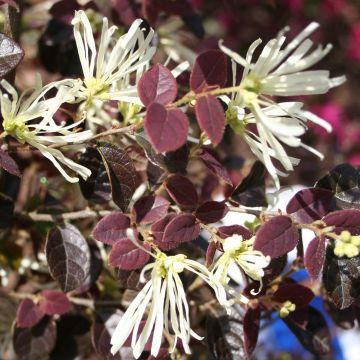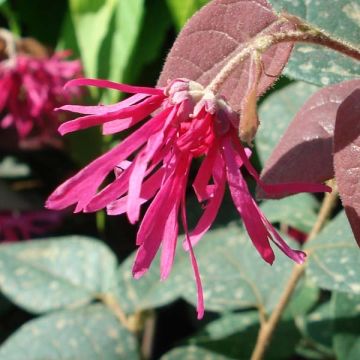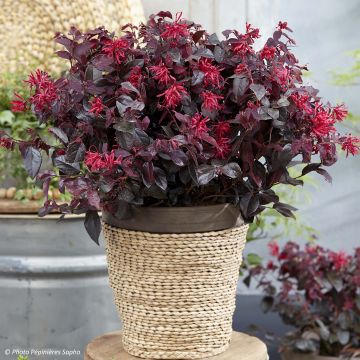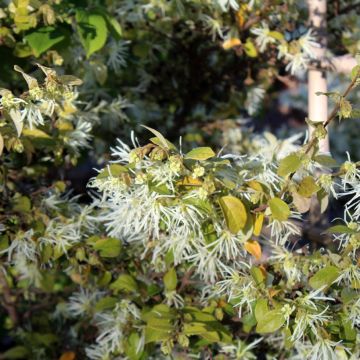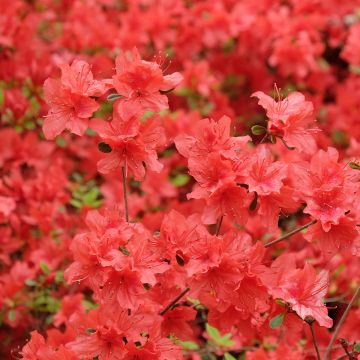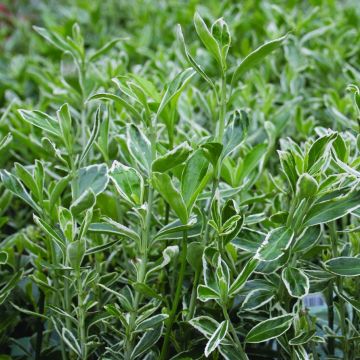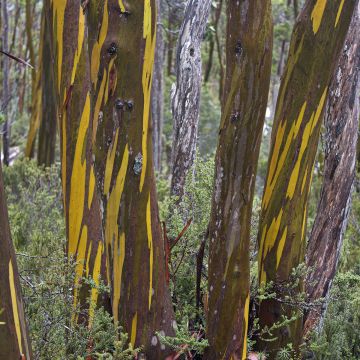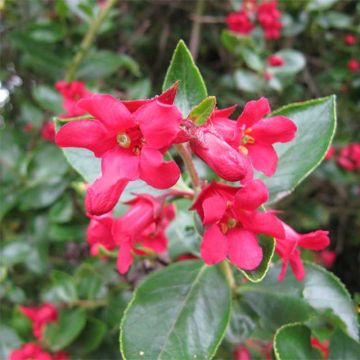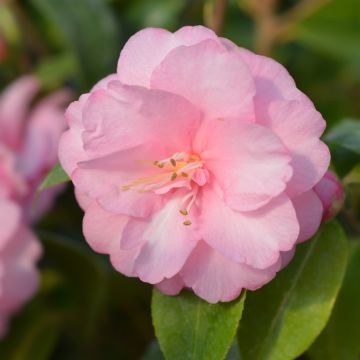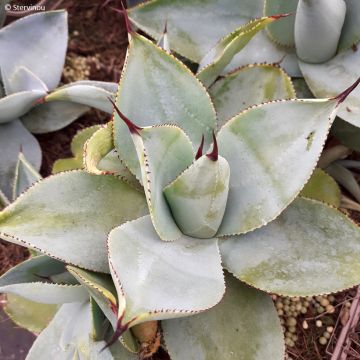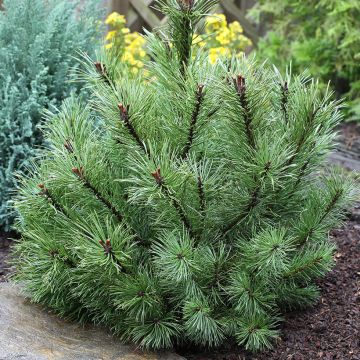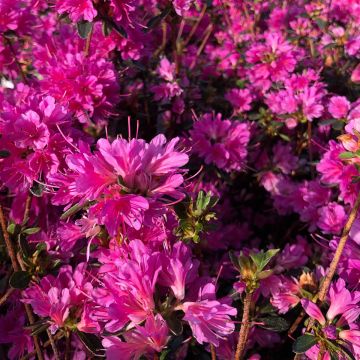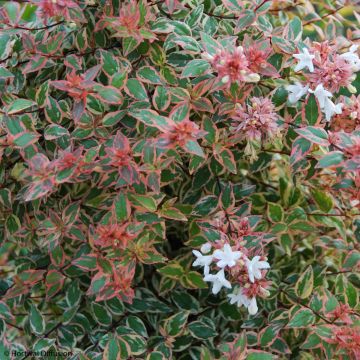Shipping country and language
Your country of residence may be:
Your country of residence is:
For a better user experience on our website, you can select:
Your shipping country:
-
Andorra
-
Austria
-
Belgium
-
Bulgaria
-
Canada
-
Chile
-
Croatia
-
Cyprus
-
Czechia
-
Denmark
-
Estonia
-
Finland
-
France
-
Germany
-
Greece
-
Hungary
-
Iceland
-
Ireland
-
Italy
-
Latvia
-
Lithuania
-
Luxembourg
-
Malta
-
Monaco
-
Netherlands
-
Poland
-
Portugal
-
Romania
-
Slovakia
-
Slovenia
-
Spain
-
Sweden
-
Switzerland
-
United Kingdom
We only deliver seed and bulb products to your country. If you add other products to your basket, they cannot be shipped.
Language:
-
French
-
German
-
Spanish
-
English
-
Italian
My Account
Hello
My wish lists
Log in / Register
Existing customer?
New customer?
Create an account to track your orders, access our customer service and, if you wish, make the most of our upcoming offers.
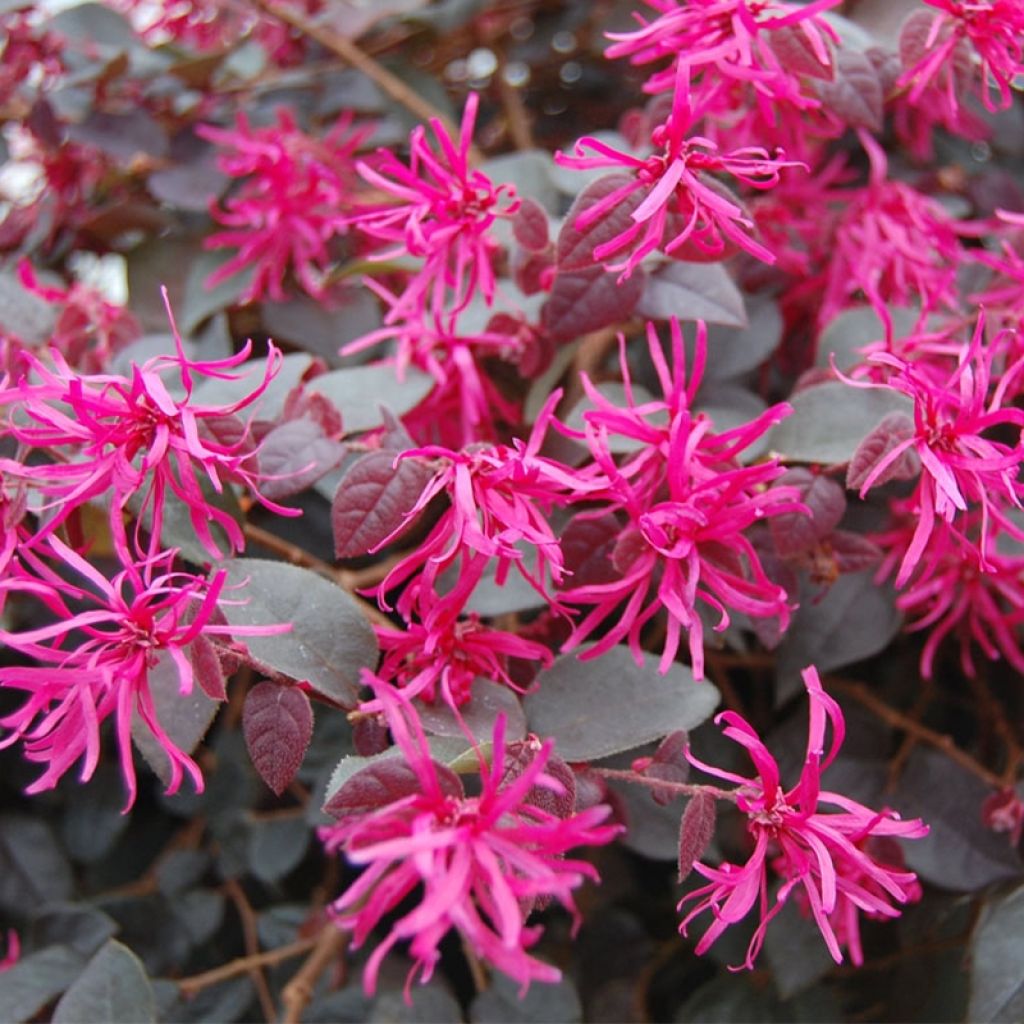

Loropetalum chinense Plum Gorgeous
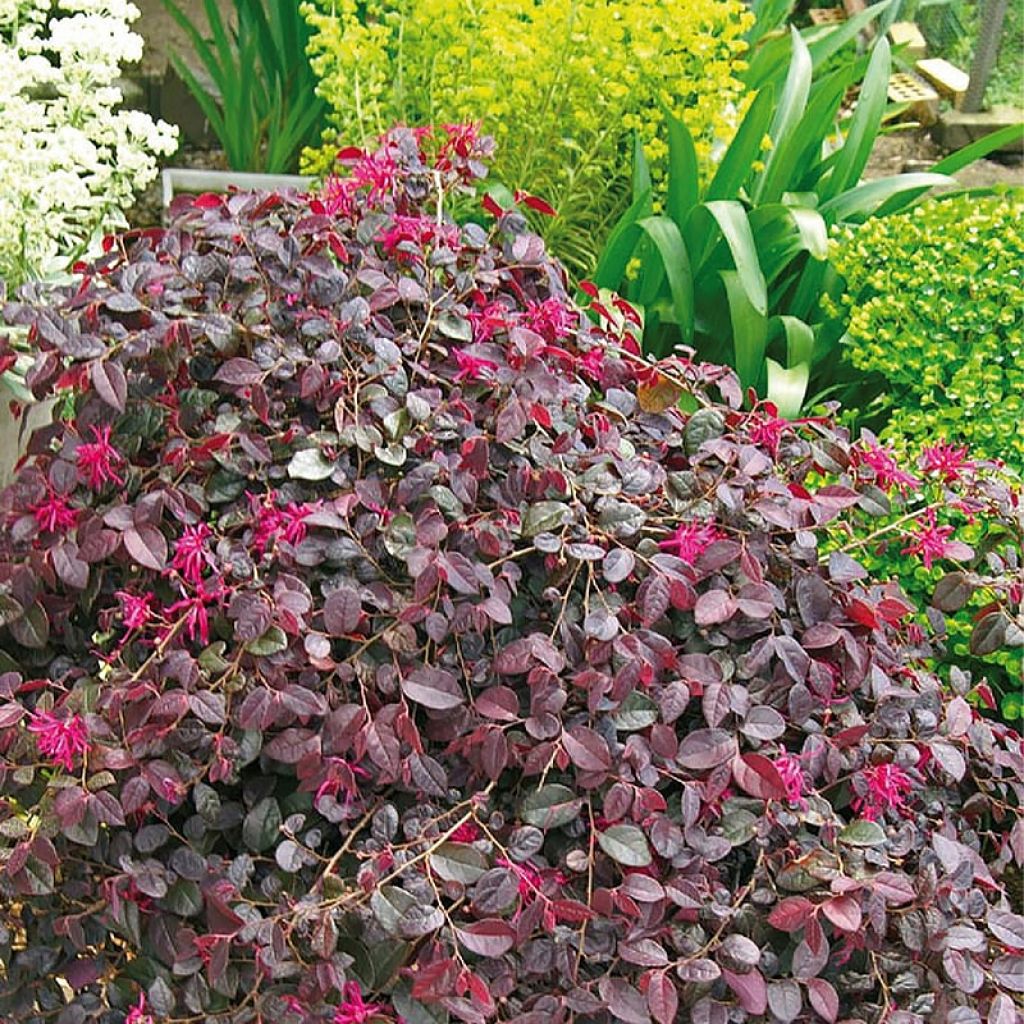

Loropetalum chinense Plum Gorgeous
Loropetalum chinense var. rubrum Plum Gorgeous - Chinese Witch Hazel
Loropetalum chinense var. rubrum Plum Gorgeous 'Pgaplugor'
Chinese Witch Hazel, Chinese Fringe Flower
Order in the next for dispatch today!
Dispatch by letter from €3.90.
Delivery charge from €5.90 Oversize package delivery charge from €6.90.
More information
This item is not available in your country.
Schedule delivery date,
and select date in basket
This plant carries a 24 months recovery warranty
More information
We guarantee the quality of our plants for a full growing cycle, and will replace at our expense any plant that fails to recover under normal climatic and planting conditions.
From €5.90 for pickup delivery and €6.90 for home delivery
Express home delivery from €8.90.
Does this plant fit my garden?
Set up your Plantfit profile →
Description
Loropetalum chinense Plum Gorgeous 'Pgaplugor' is a variety of Chinese Fringe Flower that cannot leave anyone uninterested: its vegetation forms a dense and wide mass of dark purple leaves that come alive with glorious and brilliant raspberry red flowers. Its evergreen foliage, as well as its habit, make this shrub a pillar of the garden, but also of the patio. Its appearance allows for multiple uses: it provides large areas of groundcover at the base of trees and shrubs, enhances a large rockery or a low shrub bed. Its only weakness is its relative hardiness: outside of milder regions, it must be cultivated in pots and stored away from harsh frosts in winter.
Loropetalum chinense var. rubrum, or Chinese Fringe Flower with purple leaves, is a shrub of the Hamamelidaceae family, with its 4 long ribbon-like petals that resemble those of Hamamelis. It is native to the forests and copses of the Himalayas, China, and the northern and eastern regions of India, where it grows up to 1200m (3937 ft) altitude. It is a plant that prefers rather acidic and well-drained soil, and is more tolerant than it seems. It adapts to fairly dry soils in summer, to heat, and tolerates a little limestone.
Loropetalum Plum Gorgeous is a cultivar recently selected in Australia by Growers Australia. This cultivar has a dome-shaped, dense, bushy and spreading habit. It develops foliage that persists during not too harsh climates. The oval-shaped leaves, 2 to 4 cm (0.8 to 1.6 in) long, are red when they emerge, then they take on a dark purple-violet hue that they will retain throughout the season. Flowers are particularly abundant, with a fragrance of honey, and nectar-bearing from March to early May, earlier or later depending on the climate. These last about 3 weeks. Depending on the climate, it can flower again in late summer. The flowers are grouped in the axil of the leaves, along the branches. They are composed of 4 slightly twisted ribbon-like petals, pink-red in colour, and are slightly fragrant. The almost flashy tone of the flowers creates a dazzling combination with the colour of the foliage.
Loropetalums are very trendy: unique, well-suited for potted cultivation and compact, they appeal to urban gardeners as well as lovers of English gardens. They stand out in spring scenes, beautifully coloured when the garden is still very sparse with flowers. Early in the season, their honey-scented flowers are also a good source of nectar for bees. You can grow them in pots in cold regions, in a limestone-free but fertile potting soil, and stored in winter. They can be used in an informal hedge, or within a mixed border of heathland shrubs with staggered flowering: camellias, hamamelis, azaleas and rhododendrons, andromedas and hydrangeas, for example. It can also be grown as a bonsai. This Plum Gorgeous is quite water-efficient once well established. In neutral soil and mild climates, it proves to be water-efficient once well established. It is a magnificent selection for ornamental small spaces, slopes, rockeries, and patios. For example, you can associate it with creeping leadwort (Ceratostigma plumbaginoides), Berberis Atropurpurea Nana, forget-me-nots, shrubby wormwoods, or santolines.
Report an error about the product description
Loropetalum chinense var. rubrum Plum Gorgeous - Chinese Witch Hazel in pictures
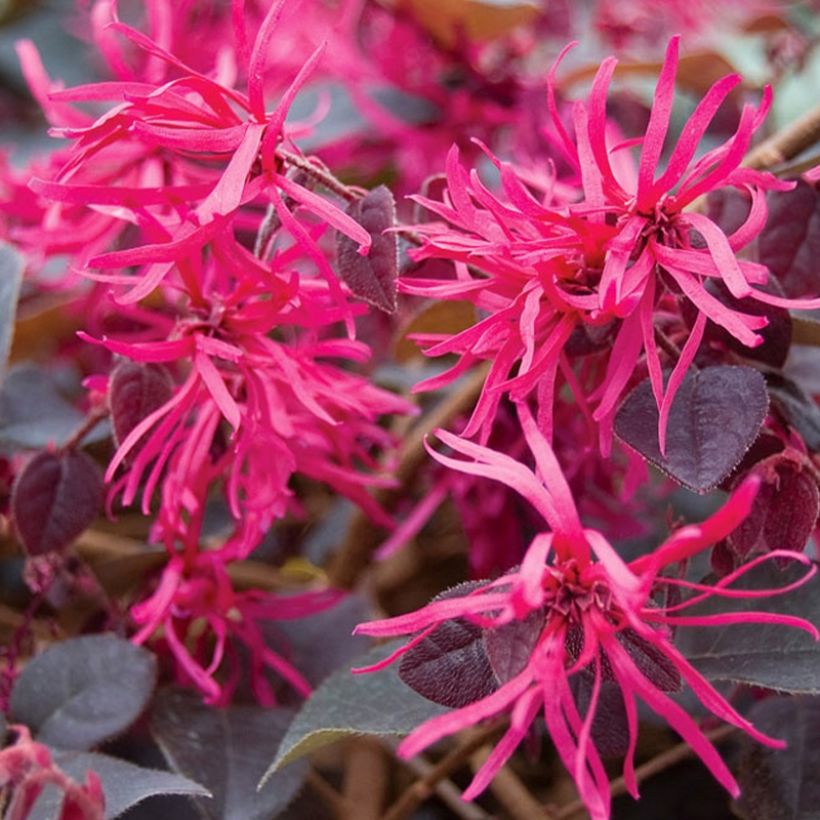

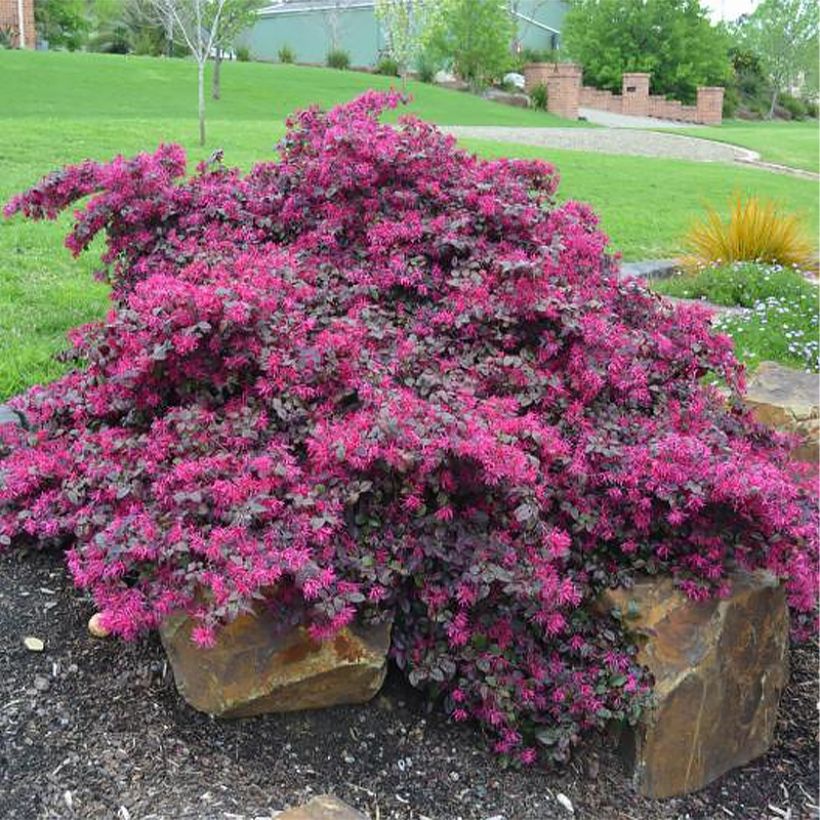

Plant habit
Flowering
Foliage
Botanical data
Loropetalum
chinense var. rubrum
Plum Gorgeous 'Pgaplugor'
Hamamelidaceae
Chinese Witch Hazel, Chinese Fringe Flower
Cultivar or hybrid
Other Loropetalum
Planting and care
Plant Loropetalum Plum Gorgeous preferably in spring (or early autumn in mild climates), in a sunny but not scorching location (morning sun) or in partial shade (especially in hot climates), in a well-drained, light soil that remains slightly moist. It requires a fertile soil, light, which is slightly acidic. However, Loropetalum chinense is hardy and relatively tolerant of soil type. It can tolerate slightly alkaline soils and tolerates drought once well-established in deep soil, with the base shaded by large perennials or small bushes. It does not tolerate excess water, which can cause its roots, which are curiously coloured red, to rot. Therefore, it requires good drainage: a good 20 centimetres of coarse sand, clay pellets, non-calcareous gravel, or pumice should be placed at the bottom of the planting pit. Add compost to the garden soil, leaf mulch and possibly some sand to lighten it. This plant can also be planted in a large container, the bottom of which should be carefully drained with gravel or broken shards. Watering should preferably be done with only slightly alkaline water or rainwater.
The 'Plum Gorgeous' variety is not very hardy: but once well established, the shrub will withstand short frosts of around -10°C in a sheltered location from cold winds and in well-drained soil. Growing it in a pot allows for winter protection in a bright but unheated space.
Diseases and pests: This bush is susceptible to root rot in poorly drained soil. It could also be attacked by olive knot gall, which can sometimes be fatal.
It is mainly propagated by through cuttings taken from the tips of the stems in late summer.
Planting period
Intended location
Care
This item has not been reviewed yet - be the first to leave a review about it.
Evergreen shrubs
Haven't found what you were looking for?
Hardiness is the lowest winter temperature a plant can endure without suffering serious damage or even dying. However, hardiness is affected by location (a sheltered area, such as a patio), protection (winter cover) and soil type (hardiness is improved by well-drained soil).

Photo Sharing Terms & Conditions
In order to encourage gardeners to interact and share their experiences, Promesse de fleurs offers various media enabling content to be uploaded onto its Site - in particular via the ‘Photo sharing’ module.
The User agrees to refrain from:
- Posting any content that is illegal, prejudicial, insulting, racist, inciteful to hatred, revisionist, contrary to public decency, that infringes on privacy or on the privacy rights of third parties, in particular the publicity rights of persons and goods, intellectual property rights, or the right to privacy.
- Submitting content on behalf of a third party;
- Impersonate the identity of a third party and/or publish any personal information about a third party;
In general, the User undertakes to refrain from any unethical behaviour.
All Content (in particular text, comments, files, images, photos, videos, creative works, etc.), which may be subject to property or intellectual property rights, image or other private rights, shall remain the property of the User, subject to the limited rights granted by the terms of the licence granted by Promesse de fleurs as stated below. Users are at liberty to publish or not to publish such Content on the Site, notably via the ‘Photo Sharing’ facility, and accept that this Content shall be made public and freely accessible, notably on the Internet.
Users further acknowledge, undertake to have ,and guarantee that they hold all necessary rights and permissions to publish such material on the Site, in particular with regard to the legislation in force pertaining to any privacy, property, intellectual property, image, or contractual rights, or rights of any other nature. By publishing such Content on the Site, Users acknowledge accepting full liability as publishers of the Content within the meaning of the law, and grant Promesse de fleurs, free of charge, an inclusive, worldwide licence for the said Content for the entire duration of its publication, including all reproduction, representation, up/downloading, displaying, performing, transmission, and storage rights.
Users also grant permission for their name to be linked to the Content and accept that this link may not always be made available.
By engaging in posting material, Users consent to their Content becoming automatically accessible on the Internet, in particular on other sites and/or blogs and/or web pages of the Promesse de fleurs site, including in particular social pages and the Promesse de fleurs catalogue.
Users may secure the removal of entrusted content free of charge by issuing a simple request via our contact form.
The flowering period indicated on our website applies to countries and regions located in USDA zone 8 (France, the United Kingdom, Ireland, the Netherlands, etc.)
It will vary according to where you live:
- In zones 9 to 10 (Italy, Spain, Greece, etc.), flowering will occur about 2 to 4 weeks earlier.
- In zones 6 to 7 (Germany, Poland, Slovenia, and lower mountainous regions), flowering will be delayed by 2 to 3 weeks.
- In zone 5 (Central Europe, Scandinavia), blooming will be delayed by 3 to 5 weeks.
In temperate climates, pruning of spring-flowering shrubs (forsythia, spireas, etc.) should be done just after flowering.
Pruning of summer-flowering shrubs (Indian Lilac, Perovskia, etc.) can be done in winter or spring.
In cold regions as well as with frost-sensitive plants, avoid pruning too early when severe frosts may still occur.
The planting period indicated on our website applies to countries and regions located in USDA zone 8 (France, United Kingdom, Ireland, Netherlands).
It will vary according to where you live:
- In Mediterranean zones (Marseille, Madrid, Milan, etc.), autumn and winter are the best planting periods.
- In continental zones (Strasbourg, Munich, Vienna, etc.), delay planting by 2 to 3 weeks in spring and bring it forward by 2 to 4 weeks in autumn.
- In mountainous regions (the Alps, Pyrenees, Carpathians, etc.), it is best to plant in late spring (May-June) or late summer (August-September).
The harvesting period indicated on our website applies to countries and regions in USDA zone 8 (France, England, Ireland, the Netherlands).
In colder areas (Scandinavia, Poland, Austria...) fruit and vegetable harvests are likely to be delayed by 3-4 weeks.
In warmer areas (Italy, Spain, Greece, etc.), harvesting will probably take place earlier, depending on weather conditions.
The sowing periods indicated on our website apply to countries and regions within USDA Zone 8 (France, UK, Ireland, Netherlands).
In colder areas (Scandinavia, Poland, Austria...), delay any outdoor sowing by 3-4 weeks, or sow under glass.
In warmer climes (Italy, Spain, Greece, etc.), bring outdoor sowing forward by a few weeks.

